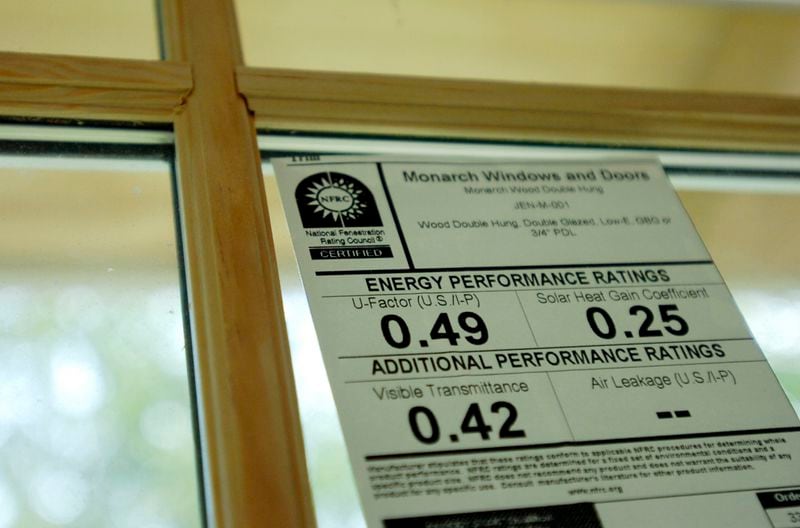Month after month, they come — dozens of families looking for financial assistance to keep their lights on, their air conditioning or heat running.
These are the people who don’t qualify for government assistance or other local programs, said Kevin Murriel, the pastor at Cascade United Methodist Church in Fulton County. Yet, they still need help, he said, and will continue to — until some deep-seated societal and economic injustices are resolved.
Last month, the Smart Energy Consumer Collaborative (SECC) released a report, saying that, among the state’s residents, low-income Atlantans must devote a disproportionate amount of their income to their energy bills.
The U.S. Department of Health and Human Services classifies energy bills above 6 percent of an individual’s income as unaffordable.
“The physical bills are not higher, but it’s the percentage of their income that they pay toward the bills that is higher than the average income customer is paying,” said Nathan Shannon, deputy director of the SECC.
And, according to a recent study by Georgia Tech, Murriel’s church is located in one of the zip codes where residents struggle the most to pay their power bills. In other words, as experts say, they have the highest energy burden.
Atlanta, home to 5.8 million people ranks fourth nationally among cities with the highest number of residents scrounging to pay their energy bills. The Georgia Tech study on Atlanta says the city's energy burden stands at 10.2 percent, higher than the state's median energy burden of 5.3 percent. The national average is 3.5 percent.
In 2014, the federally funded Low Income Home Energy Assistance Program (LIHEAP), operated by the Department of Health and Human Services, disbursed $3.5 billion to approximately 38.5 million households nationwide.
Nearly 161,000 Georgia households received $61 million of those funds.
Still, the SECC report said, “less than 20 percent of income eligible households receive help from LIHEAP.”
Shannon attributes the discrepancy to a flat amount of funding allocated to the federal program. “Once that amount is hit, no other consumer receives it. So its basically a first come, first served basis, ” added Shannon.
Others benefited from assistance from other sources, including Georgia Power, the state’s largest electricity company. The company provides various programs to assist its customers in need. According to the company, more than 80,000 eligible customers received $24 senior citizen discounts in 2017, while 46,000 other customers are enrolled in the company’s prepay program where customers pay for energy in advance.
Georgia Power spokesperson, Craig Bell, said demand for assistance from customers normally peaks during summer and winter months when extreme weather conditions push energy bills high. Last year, the company made payment arrangements with nearly 1.4 million customers.
Despite the availability of federal and local programs aimed at assisting customers with high energy bills, SECC reports, “an alarming gap between available assistance and those in need.”
Unemployment among some Atlanta residents and high poverty levels compound the problems low income households face in keeping up with their bills.
“Ultimately, we have got to get to the root of it all. We have got to deal with the injustice and inequities in our society, or else we are going to continue to see these problems perpetuate and grow,” said Murriel.
Bills are expected to rise with soaring summer temperatures and 2018 trending toward being the fourth hottest year on record globally, according to the National Oceanic and Atmospheric Administration.
Utility experts say increasing energy efficiency in low income households by implementing cost-saving measures, such as energy efficient bulbs and appliances in homes, could substantially drive costs down, helping ease the financial burden posed by high energy bills.
“It does require an extra step of being more engaged. … It does require more work, but ultimately it ends up with a significant amount of savings,” said Shannon.
Ellie Fluker, a 77-year-old Decatur resident on a fixed retirement income, reached out to Georgia Power for the company’s help in lowering her bills through the utility’s free Energy Assessment and Solutions Program. She couldn’t be more pleased with the results.
Fluker, who has lived in her home for more than 50 years, saw her electricity bill drop from $178 to $92 a month after new insulation was installed in her house. “You cannot believe the difference that made,” she said.
Utility companies in the state are barred from disconnecting services to customers:
- When temperatures are below 32 degrees or above 98 degrees.
- If customers are ill and the disconnection could further aggravate their condition.
Georgia Power flexible bill plans include:
- Bill payment assistance: Provides customers with payment arrangements or connections with community organizations that help with utility bills.
- Budget Billing: A free service that helps manage the seasonal highs and lows of energy usage, by averaging customer payments across the year so that bills have less variability.
- Flat Billing: Plan offers a 12-month fixed contracted price that does not fluctuate when power usage does. It is based on a customer's previous year's history at their current location.
- Prepay: This voluntary service helps customers use a "pay as you go approach," buying energy in advance, rather than building up large unpaid balances. Customers on prepay also avoid paying a deposit for service (limited availability).
- Project Share: Allows customers to make a donation their Georgia Power bill that will go to helping others in the community.
SOURCE: Georgia Power






